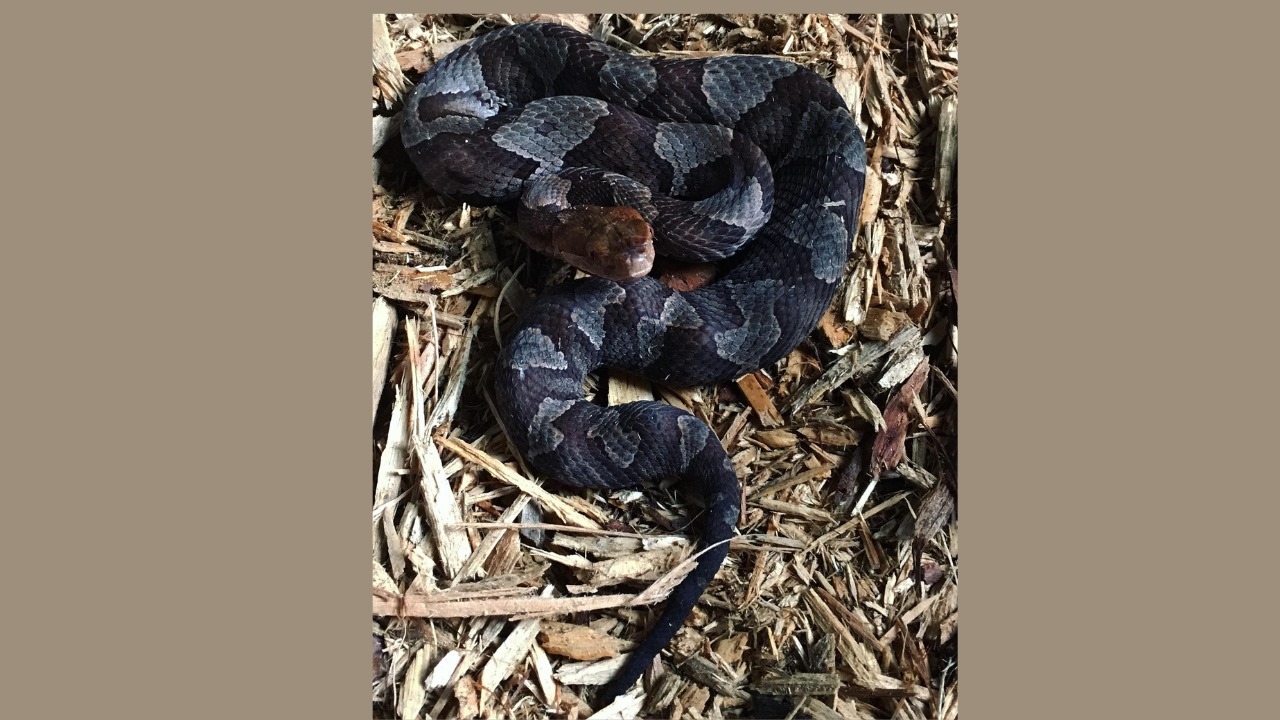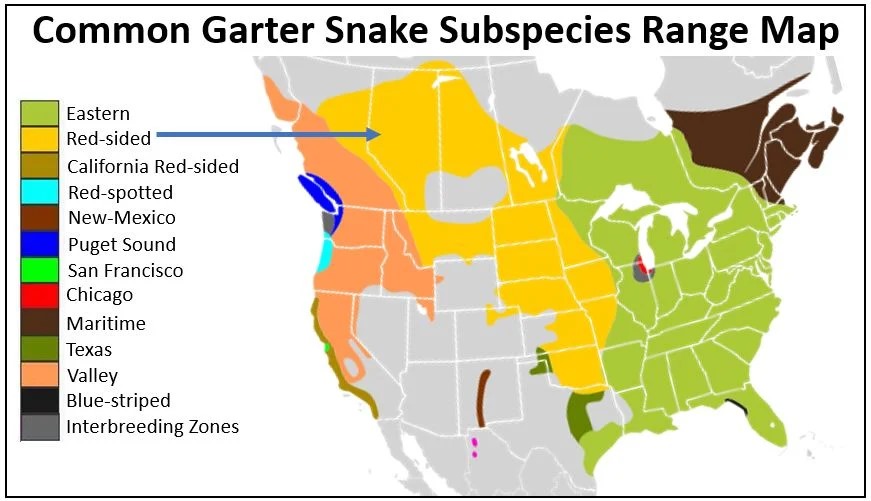Introduction
Garter snake is one of the most widespread reptiles of North America, commonly seen in gardens, fields, and along water bodies. The garter snake is too commonly misunderstood despite being so familiar, and hence it creates unnecessary fear. This article provides a comprehensive overview of the garter snake, exposing its characteristics, appearance, habitat, diet, bite, taxonomy, distribution, and much more.
What is a Garter Snake?
A garter snake is a medium to medium-sized, non-toxic snake belonging to the genus Thamnophis. Thus, the snake’s body has longitudinal stripes, and they are not poisonous. Therefore, they are extremely useful in the dispersal of pest quantities. Their capability to acclimatize in an environment tells us how they disperse their presence so widely throughout the continent.
Taxonomic Classification of Garter Snakes
Garter snakes belong to the Colubridae family, which is a huge family of non-venomous snakes. They are part of the genus (Thamnophis) with approximately 35 species. Below is a summary of their taxonomy:
| Taxonomic Level | Classification | Description |
|---|---|---|
| Family | Colubridae | A large family of non-venomous snakes with many species around the world. |
| Genus | Thamnophis | Contains approximately 35 species of garter snakes, which are highly adaptable and have varied habitats. |
| Species Example | Thamnophis sirtalis | Common garter snake, one of the geographically most varied species of North America. |
The genus (Thamnophis) is representative in that it ranges throughout most of North America, with various species being found in different habitats. The common garter snake (Thamnophis sirtalis) is especially representative of its range throughout most areas.
Garter snakes range widely across North America. They range from the Canadian subarctic, south through the United States, to Central America. Alberta is home to three species of garter snakes with distinctive ranges across the province. The Red-sided Garter Snake (Thamnophis sirtalis) ranges from the foothills and boreal forest to the parklands, as far north as the Alberta border. The Plains Garter Snake (Thamnophis radix) occurs most frequently in the south and east, with its northern edge near Cold Lake. Similarly, the Wandering Garter Snake (Thamnophis elegans) inhabits a zone south of the Red Deer River, e.g., in foothill terrain and the Peace River Valley. They occupy a variety of types of habitats, including wetland habitats, forest, prairie habitats, and urban areas, and will normally den in among plant material and dense ground cover zones.
What Does a Garter Snake Look Like?

Garter snakes are skinny reptiles, measuring about 18 to 26 inches (46 to 66 centimeters) in length, although some have reached up to 42 inches (107 centimeters) or around 2-3 feet long.
Every one of the snakes lives from 3-10 years, depending on how lucky they are to remain out of the reach of hazardous humans. Their bodies have three longitudinal stripes of different colors running the length of their backs and sides. The stripes are normally yellow but can also be green, blue, or white, depending on the geographical region of the snake and the species. The intervening background color between stripes ranges from black and brown to greenish shades.
The garter snake’s head is a little wider than its neck and dark and solid-colored. It has black-tipped red tongues and keeled scales, i.e., scales with a ridge in the middle of each one, which gives it a rough texture. While the striped appearance described above is typical of the common garter snake (Thamnophis sirtalis), some will be checkered or completely stripeless, showing the diversity of the species’ appearance.
Garter Snake Diet: What Do They Eat?
Garter snakes are opportunistic carnivores with a diverse diet of many small animals. The following is a list of their usual prey:
| Prey Type | Description |
|---|---|
| Earthworms | Typically eaten in wet conditions. |
| Amphibians | Frogs and toads, some of which are toxic, as they are immune. |
| Leeches | In aquatic environments, a food source. |
| Slugs and Snails | |
| Insects | Some species, larvae, and adults are consumed. |
| Crayfish | In aquatic contexts, they feed on small crayfish. |
| Small Fish | |
| Other Snakes | Infrequently, they eat other small snakes. |
| Small Mammals and Birds | They may rarely eat small mammals or nesting birds when they encounter them. |
Their immunity to certain poisons and versatility allow them to thrive in numerous ecosystems.
Is a Garter Snake Poisonous? What Happens if a Garter Snake Bites You?
The garter snakes have long been considered non-poisonous, but they have proved to secrete a low-grade neurotoxic venom. This venom is not powerful enough to cause serious harm to human beings, however. In isolated individual cases, victims of a garter snake bite might develop some temporary symptoms like localized swelling, itching, or bruising. The case of Wandering Garter Snake (Thamnophis elegans vagrans) bite is not different and comprises local edema and hemorrhagic vesicles but no systemic impact. Garter snake bites are typically innocuous. Clean the wound with soap and water if bitten to avoid infection. Allergic reactions are not typically common; however, those who experience unusual symptoms should see a physician.
Habitat and Distribution of Garter Snakes
Garter snakes are very adaptable reptiles that can be found in a vast array of habitats throughout North America. They are comfortably adapted to residing in habitats as diverse as forests, grasslands, and wetlands, and suburbs, and their preference for residing in wet, grassy places tends to see them occupying proximity to bodies of water such as ponds, lakes, ditches, and streams. Their adaptability has seen them become one of the most geographically dispersed species of snakes on the continent.
Temperament and Behavior of Garter Snakes
Garter snakes are diurnal, or day-active. They may usually be seen basking in the sun to control their body temperature. During threat, garter snakes have different defense methods such as giving off a pungent musk, playing dead by flattening their bodies, or trying to escape. They are not generally aggressive and would rather keep away from people. In cold weather, they brumate, usually forming big social hibernacula.
Can I Keep a Garter Snake as a Pet?
It is possible to have a garter snake as a pet, yes, but there are both advantages and disadvantages. They do not grow in size and can be kept quite easily, owing to which many reptile handlers get them as pets. But they will certainly not be friendly like some snake species that we keep as pets, and will emanate a smelly musky odor when threatened. The snakes should be held in an appropriate enclosure with appropriate temperature gradients. ambient 75-85°F; 35-60% humidity; hide places. Diet in captivity will usually be earthworms, fish, and appropriately sized rodents. Attempt to determine what the law is before getting a garter snake, since laws about having them captive vary.
How to Catch a Garter Snake (If Necessary)
If moving requires catching a garter snake, proceed as follows to prevent injury and provide humane treatment:
- Preparation: Put on thick, long gloves to rule out the possibility of being bitten and also to minimize stress for yourself and the snake.
- Capture Method: Capture the snake using a broom or other available tool and redirect it into a covered container. Try not to handle it by hand if at all possible.
- Preparation of the Container: Ensure the container is escape-proof with holes for ventilation to prevent suffocation.
- Relocation: Transfer the snake to a place not suitable for human habitation, preferably to an area where there is access to food, shelter, and water as a source of food like insects or worms.
- Adhering to Laws: Always follow local wildlife law when relocating snakes, since there are some areas where there are laws or restraints against relocation.
- The Role. Relocation: Release the snake into a secure area, and allow it to acclimate to its new environment without further disturbing it.
Interesting Facts About Garter Snakes
The following are interesting facts about garter snakes:
- Versatility: Garter snakes are very versatile and fit into various habitats, from gardens to marshy areas, and demonstrate their ability in entirely different environments. They are distributed in every region of North America, from Mexico to Canada.
- Defensive Mechanism: When in danger, garter snakes release a pungent, foul-smelling secretion from the anal glands, repelling predators. The odd defensive strategy keeps them safe from most potential predators.
- Reproduction: Female garter snakes are capable of storing sperm for an extended period so that they get to control when they get to fertilize eggs. This method of reproduction enhances their reproductive success.
- Striped Appearance: The striped colors serve as camouflage and warning from their natural enemies. The stripes also serve as thermoregulation as they reflect the sunlight.
- Agility and Speed: Garter snakes are fast and agile, allowing them to run fast when threatened, usually dodging predators by flying extremely fast, similar to running.
- Ecological Diversity of Habitat: They inhabit diverse habitats, including forests, grasslands, and wetlands, and thus are ecologically diverse.
- Lethargic Venom: While previously thought to be non-venomous, certain garter snake species possess a weak venom that is not harmful to human beings but rather overpowers the prey.
Conclusion: Paying Tribute to the Common Garter Snake
Garter snakes play a critical function in keeping nature in balance by regulating pests. Their changing habitats, their intriguing nature, and their de facto benign nature to human beings render them a very intriguing animal to study. With the understanding and appreciation of the reptiles, we will be able to live together with them and also enjoy their services to our ecosystem.
FAQs for Garter Snakes
- Q: Are garter snakes poisonous?
- A: No, garter snakes are not venomous. They bite when provoked, but they are harmless to human beings.
- Q: What is the feeding habit of garter snakes?
- A: Garter snakes are carnivorous and consume a large range of food items such as earthworms, insects, small fish, and amphibians.
- Q: How do garter snakes defend themselves?
- A: They squirt a strong-smelling fluid from their anal glands when attacked and it keeps predators away.
- Q: Are garter snakes suitable as pets?
- A: Although garter snakes are kept as pets, they are special to handle and care for. They ought to be checked against local legislation before being kept.
- Q: How long do garter snakes live?
- A: Garter snakes in the wild live for approximately 2-3 years, but some live longer in captivity with proper care.




Trackbacks/Pingbacks